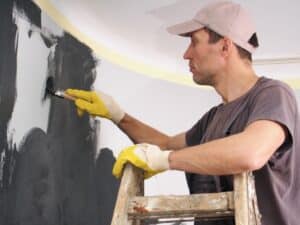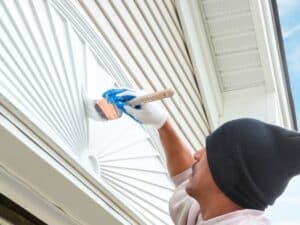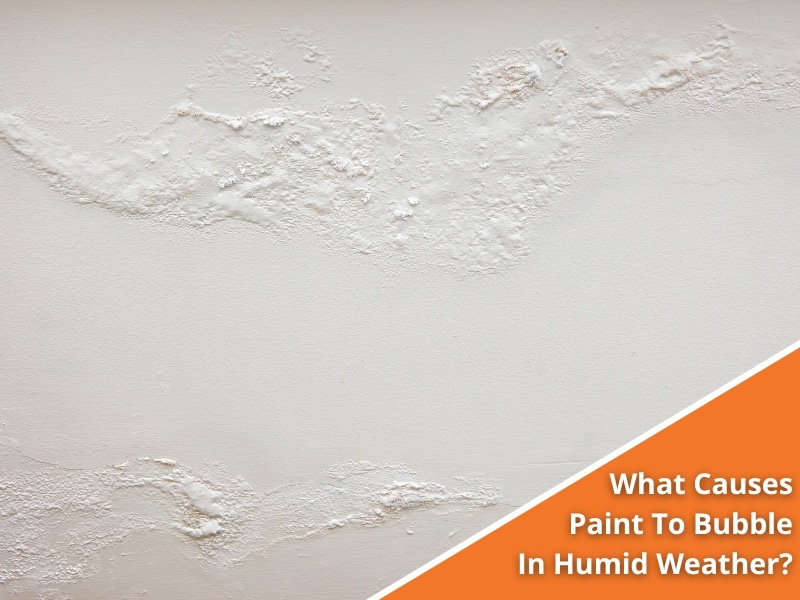Have you ever spent time painting a surface, only to find bubbles forming soon after? If you’re dealing with humid weather, this is a common issue. Moisture in the air interferes with the paint’s ability to adhere properly, leading to unsightly bubbles that can ruin the finish. Understanding what causes paint bubbling in humid conditions can help you take the right steps to prevent it.
How does humidity affect paint application and drying?
Humidity plays a significant role in how paint behaves, from application to drying. Here’s how:
- Slows down drying time – High humidity means excess moisture in the air prevents paint from drying at the expected rate.
- Traps moisture under the paint – If the surface isn’t completely dry before painting, trapped moisture can push the paint away, causing bubbles.
- Weakens paint adhesion – Paint needs a dry surface to bond properly. Humid conditions can cause poor adhesion, leading to peeling and bubbling.
- Increases the risk of condensation – When warm, humid air meets a cooler surface, condensation can form, which affects paint application.
Explore the concept of hygroscopic materials to understand how they absorb moisture from the air, which can significantly impact the performance and longevity of your paint, especially in humid conditions.
What are the main reasons paint bubbles in humid conditions?
Several factors contribute to paint bubbling when the weather is humid. Some of the most common reasons include:
- Painting on a damp surface – If moisture is present on the wall, paint won’t adhere properly and will form bubbles as it dries.
- Applying paint too quickly between coats – Each layer needs time to dry. If the first coat hasn’t fully dried, moisture can become trapped between layers.
- Using low-quality paint – Not all paints are made to withstand humid conditions. Cheaper paints often lack the necessary properties to resist moisture.
- Lack of proper ventilation – Without good airflow, excess moisture lingers, increasing the chances of paint bubbling.
- Direct sunlight exposure – Sunlight can heat a damp surface, causing moisture to rise and create bubbles under the paint.
Which types of surfaces are more prone to paint bubbling?
Some surfaces are naturally more susceptible to paint bubbling, especially in humid conditions. These include:
- Wood – Since wood absorbs moisture, painting over damp wood can form bubbles as the moisture evaporates.
- Plaster and drywall – These materials absorb moisture easily, which can lead to adhesion problems if the surface isn’t dry before painting.
- Concrete and masonry – If the surface isn’t properly sealed, moisture can seep in and push the paint away over time.
- Metal surfaces – Condensation can form on metal without proper priming, creating a weak bond between the paint and the surface.
How can you prevent paint from bubbling in humid weather?
Taking preventive measures can help ensure a smooth and long-lasting paint finish. Here’s what you can do:

- Check the weather forecast – Avoid painting on days with high humidity or rain.
- Prepare the surface properly – Ensure surfaces are clean, dry, and moisture-free before applying paint.
- Use high-quality paint – Choose paints specifically designed to withstand humid conditions.
- Allow adequate drying time – Follow manufacturer guidelines for drying times between coats.
- Ensure good ventilation – Open windows, use fans, or employ dehumidifiers to reduce indoor moisture.
- Apply a primer – A high-quality primer helps improve paint adhesion and creates a protective barrier against moisture. Additionally, the benefits of using primer for a flawless paint finish are significant, as it creates a smooth, even surface that enhances paint adhesion.
- Avoid painting in direct sunlight – Paint in shaded areas to prevent heat from accelerating moisture evaporation.
What should you do if your paint starts to bubble?
If you notice paint bubbling, it’s best to address it quickly to prevent further damage. Follow these steps:
- Assess the damage – Identify the extent of the bubbling and check for underlying moisture problems.
- Remove the bubbles – Scrape away the affected paint using a putty knife.
- Sand the surface – Smooth out the area to create an even base for repainting.
- Allow the surface to dry – Ensure the area is completely dry before applying a new coat of paint.
- Use a primer – Apply a moisture-resistant primer to enhance adhesion.
- Repaint the surface – Apply fresh paint in thin, even coats, allowing adequate drying time between layers.
To address flaking paint issues professionally, hiring experienced painters who can properly prep surfaces is crucial, ensuring the best results and long-lasting durability.
Does using professional painting services help prevent paint bubbling?
Hiring professional painters in Sydney can make a significant difference in preventing paint bubbling. Here’s why:
- Expert surface preparation – Professionals ensure surfaces are properly cleaned, dried, and primed before painting.
- Use of high-quality materials – They select the right type of paint and primer for humid conditions.
- Correct application techniques – Experienced painters apply paint in thin, even coats with proper drying times.
- Knowledge of weather conditions – Professionals choose the best days and conditions for painting to avoid humidity-related issues.
- Guaranteed results – Hiring experts ensures a durable and smooth finish, saving you time and money in the long run.

Get a flawless finish with Sydney Paintmasters
If you want a professional, long-lasting paint job that resists bubbling and peeling, Sydney Paintmasters is here to help. With years of industry experience and a team of fully licensed and insured painters, we specialise in delivering high-quality results tailored to Australian weather conditions. Our work meets industry standards, and we use premium moisture-resistant paints to ensure a durable finish.
Customers consistently praise our attention to detail, professionalism, and competitive pricing, with even builders impressed by the quality of our work. Whether you need exterior or interior painting, we guarantee a smooth, bubble-free finish.
For expert painting services backed by experience and industry knowledge, contact Sydney Paintmasters today!
FAQs about paint bubbling in humid weather
- Can using a dehumidifier help prevent paint bubbling?
Yes, using a dehumidifier can reduce indoor humidity, creating better conditions for paint to dry properly.
- Is oil-based paint better for humid conditions than water-based paint?
Oil-based paints tend to be more resistant to moisture. Still, modern water-based paints with mould-resistant properties can also perform well in humid areas.
- Why do bubbles appear in fresh paint, even in an air-conditioned room?
Bubbles can still form if moisture is trapped beneath the paint or the surface isn’t properly cleaned and dried.
- Does high humidity affect both interior and exterior paint jobs?
Yes, humidity can cause issues for both indoor and outdoor painting projects if proper precautions aren’t taken.
- How soon can you paint after rain?
It’s best to wait at least 24 to 48 hours after rain before painting to ensure the surface is completely dry.
- Can repainting over bubbles fix the problem?
No, repainting over bubbles without addressing the cause will only result in more bubbling. The affected paint must be removed first.
- What’s the ideal humidity level for painting?
The best humidity range for painting is between 40% and 50%. Anything above 70% can lead to paint problems.
- Why does old paint start to bubble when exposed to humidity?
Over time, paint can lose its adhesion due to moisture exposure, causing it to bubble and peel.
- Will adding extra coats of paint prevent bubbling?
No, excessive layers of paint can trap moisture and increase the likelihood of bubbling rather than preventing it.
- How do you fix bubbling paint on a ceiling?
Scrape off the bubbles, sand the area, apply a moisture-resistant primer, and repaint with a suitable paint designed for ceilings. If you’re looking for an expert exterior painting for your home, it’s essential to choose a professional team that understands the challenges posed by weather conditions, ensuring a durable and flawless finish.
Disclaimer:
The information in this article is for general guidance only. For tailored advice based on your specific painting needs, consult a professional.

